As a property owner, it is crucial to understand the distinctions between repairs, maintenance, and capital improvements in order to optimize your tax savings.
There is an ongoing concern about what type of deductions you can use to claim expenditures spent on your property and it can be daunting at the time.
There are so many terms with similar meanings, and it is important to know the key differences in order for you to claim your deductions correctly when you submit your tax returns.’

Below are the Australian Taxation Office (ATO)’s terms relating to what you spent on your property:
Repairs
Repairs refer to work done to fix or restore a property to its original condition. This can include fixing a leaky roof, replacing a broken window, or repainting a room.
The good news is that repairs are typically considered deductible expenses and can be claimed in the financial year the expense was incurred. That means, if you’ve made repairs to your property in the past year, you could be entitled to a significant tax refund.
Important to note that repairs must be made to an existing structure or asset, and they must be done to maintain or improve the asset’s existing condition or function. Repairs must also be done for the purpose of earning income, such as rental income from a rental property.
Maintenance
Maintenance refers to regular upkeep and upkeep of a property to keep it in good condition. This could include lawn mowing, gardening, or cleaning gutters. According to ATO, maintenance expenses are generally not tax-deductible, as they are considered to be part of the cost of owning and maintaining a property.
Examples of maintenance expenses that are not tax-deductible include:
- Regular cleaning and upkeep of a rental property
- Lawn mowing and gardening
- Pest control
- Replacing light bulbs or smoke alarm batteries
- Servicing of appliances
It’s important to note that some maintenance costs may be considered repairs and therefore deductible, for example, if the maintenance is done to fix or restore a property to its original condition, or if it is done to maintain or improve the asset’s existing condition or function.
Also, it’s important to keep records of all expenses related to the property, including maintenance and repairs, in order to be able to justify the expenses to the ATO if needed, and also to be able to distinguish between what is a deductible repair and what is not.
Capital improvements
Capital improvements refer to work done to increase the value or extend the life of a property. This could include adding a room, building a deck, or upgrading the property’s insulation. According to the Australian Taxation Office (ATO), capital improvements are considered to be capital expenses and are therefore not deductible in the year they are incurred. However, they do increase the cost base of the property, which can reduce capital gains when the property is sold in the future.
Examples of capital improvements that are not tax-deductible include:
- Building an extension or addition to a property
- Renovating a kitchen or bathroom
- Installing a swimming pool or spa
- Building a new garage or carport
- Installing new flooring
- Building a new fence
It’s important to note that if the capital improvement is done to repair or restore the property, it will be considered a repair and will be tax-deductible. Also, if the capital improvement increases the property’s income-producing potential, some of the cost may be considered a tax-deductible expense.
Lastly, likewise, it is important to keep accurate records of the expenses and the reasons for doing the improvements, in order to claim it correctly and to avoid disputes with the ATO.
On a final note, while it is advisable to consult tax professionals like your tax accountant, tax lawyer or even ATO for guidance on how to claim deductions for repairs, maintenance or capital improvements, it is important to note that as specialist quantity surveyors, we can, in conjunction with the above, provide professional advice on the cost and nature of the works which will be useful in determining where your related expenses on your property sit in these 3 different types of deductions.


